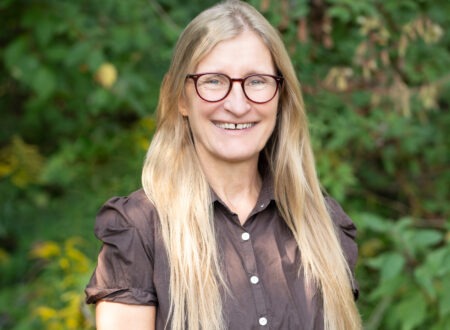In the end, the unanimous decision of the Supreme Court of Canada in Chevron Corp. et al. v. Yaiguaje (2015 SCC 42, decided September 4, 2015) was simple. The indigenous Ecuadorian villagers in the Amazon jungle, who had been awarded damages against multinational oil company Chevron Corporation (“Chevron“) in the Ecuador courts for environmental contamination in Ecuador, are allowed to sue that parent company and one of its subsidiaries, Chevron Canada Limited (“Chevron Canada“) in the Ontario courts to seek to enforce that foreign award.
For the province`s superior courts to have jurisdiction, plaintiffs do not need to show a “real and substantial connection” between the judgment debtor (Chevron) or the dispute in another country, and the Canadian province in which they wish to try to enforce a foreign judgment. Nor must the judgment debtor possess assets in the province at the time the enforcement case is brought. Assets move in and out of jurisdictions with relative ease and the Court left it up to successful foreign plaintiffs to select which jurisdiction(s) they seek to enforce in. All that is required to establish jurisdiction in a Canadian court to enforce against the judgment debtor is that the foreign court had jurisdiction over the original claim and that the judgment debtor was served under the province’s rules of procedure.
What is also attracting much attention in this case is the role of Chevron Canada, the subsidiary. The Court concluded that jurisdiction of Canada’s superior courts to seek to enforce a foreign judgment against its Canadian subsidiary will exist as long as the subsidiary has a presence in the province. In Chevron Canada`s case, this was easily established. It has a “bricks and mortar“ place of business in Mississauga, where it was properly served with the claim under Ontario’s rules. (Its head office is in Alberta.)
Getting to this decision has been anything but simple. This case has been in the courts for over 20 years. The hurdles have been numerous and high. The procedural wrangling rivals that of aboriginal title cases in Canada.
-In 1990, the Ecuadorians sued in a U.S. court against Chevron, based in California, seeking damages from 1972-1990 against Chevron (with which Texaco had merged) for contamination by Texaco of land and water in the Amazon jungle used by Ecuadorian villagers, and related damages to their health.
-over a decade later, the U.S. court on appeal threw out that claim, concluding that Ecuador was the proper jurisdiction to make the claim, not the U.S.
-in the Ecuadorian courts, the trial court found in favour of the Ecuadorians after an 8-year trial. The trial court awarded $17.2 billion in general and punitive damages.
-Chevron appealed the trial court`s decision. The Ecuadorian appellate court found Chevron was liable, but for $9.5 billion which did not include punitive damages.
-In 2012, because Chevron no longer had assets in Ecuador, they served Chevron in the U.S. and also served Chevron Canada – with a place of business in Ontario – to seek to enforce in Ontario against Chevron and Chevron Canada’s assets and shares. (Cases were also launched in other countries, including the U.S.).
-the Ontario Superior Court of Justice found that the Ontario courts did have jurisdiction, but used its discretion, even though Chevron had not asked it to do so, to stop the judgment enforcement case from going forward (called a “stay“). It was not prepared to pierce the increasingly hole-filled corporate veil in this case.
-the Ontario Court of Appeal overturned the Superior Court’s decision about staying the case.
-on appeal to the Supreme Court of Canada, the Canadian Bar Association initially tried to intervene on behalf of Chevron and Chevron Canada. OKT lawyers Judith Rae and Lorraine Land both played key roles in convincing the CBA not to intervene to support the corporations.
Having finally determined that the Canadian court system has jurisdiction to seek to enforce the Ecuadorian court’s damages award is only one step. Two key hurdles remain if the Ecuadorian villagers will be able to collect on the Ecuadorian courts award in Canada:
1. Will the Canadian courts recognize and enforce the foreign court’s award?
That hurdle too will be high. A U.S. federal court, in respect of the same Ecuadorian judgment, concluded that the Ecuadorian court award was obtained through fraud and corruption and therefore could not be enforced in the U.S. That decision is under appeal and the Ontario courts have not yet had any evidence placed before them about these allegations. Chevron will also be able to argue that Ontario is not a convenient forum, or that a stay should be granted.
2. If the foreign judgment is recognizable and enforceable in Ontario, can Chevron Canada’s shares or assets in Canada be used to satisfy the debts of its parent?
This issue goes to a key corporate law concern of determining whether subsidiaries of parent corporations can be liable for the acts of those parent corporations. The Supreme Court did not delve into this principle of “corporate separateness” in its decision. The setting up of subsidiaries is common in corporate law, one of the reasons being to isolate those subsidiaries from liability from the acts or omissions of parents and other subsidiaries. In this case, Chevron Canada is a 7th level indirect subsidiary of Chevron Corporation – Chevron Corporation owns 100 % of each of the corporations in the chain that ends with Chevron Canada, but does not own Chevron Canada`s shares. Will the courts be prepared to reach in in this case to enforce the Ecuadorian court’s award against the shares or assets of Chevron Canada?
This case is of importance to aboriginal peoples in Canada, for several reasons. Many aboriginal peoples in Canada have supported indigenous peoples in other countries whose lands and waters and health and welfare are being harmed by the operations of multinational resource development companies. They have sought to support them in their efforts to hold those companies to account and to seek redress for damages. As well, many resource development companies operating in the traditional territories of First Nations in Canada have operations in other countries. First Nations enter into impact and benefit agreements and other resource development agreements with Canadian subsidiaries, and some are shareholders or partners in those Canadian subsidiaries. The value of those agreements and arrangements may be affected if the indigenous Ecuadorian villagers are successful in overcoming the two hurdles that remain.
By Nancy Kleer
Related Posts

Innu Solidarity with Joyce Echaquan
The Innu Round Table met on October 8, 2020 in St. John’s, Newfoundland & Labrador. The Innu Round Table is a regular trilateral meeting between Labrador Innu representatives and federal…
Read More...
Resources to Assist First Nations in Responding to the COVID-19 Pandemic
As the number of COVID-19 confirmed cases is rising across Canada, First Nations are responding to protect their community members and encourage actions to prevent the spread to their communities. …
Read More...
"Building Common Ground" report released: implementing FPIC in Federal environmental assessment
On April 5, the Minister of Environment and Climate Change, Catherine McKenna, released the much-anticipated independent expert report on reforming Canada’s environmental assessment processes, “Building Common Ground: A New Vision…
Read More...

